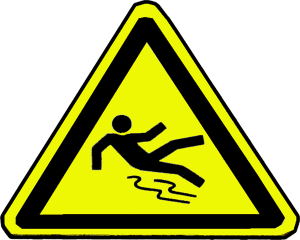“That is why, no matter how desperate the predicament is, I am always very much in earnest about clutching my cane, straightening my derby hat and fixing my tie, even though I have just landed on my head.”
– Charlie Chaplin
[fusion_builder_container hundred_percent=”yes” overflow=”visible”][fusion_builder_row][fusion_builder_column type=”1_1″ background_position=”left top” background_color=”” border_size=”” border_color=”” border_style=”solid” spacing=”yes” background_image=”” background_repeat=”no-repeat” padding=”” margin_top=”0px” margin_bottom=”0px” class=”” id=”” animation_type=”” animation_speed=”0.3″ animation_direction=”left” hide_on_mobile=”no” center_content=”no” min_height=”none”]

Image credit: Molokaicreeper
It is an unfortunate inevitability of business that, occasionally, even the very best of us will drop the ball and disappoint a customer. Sometimes, a perfect tempest will form, creating a situation where our involvement has the potential to be the proverbial straw that breaks the camel’s back. So what can we do when cases start to go sideways?
The first step is to realize and acknowledge that things have not gone according to plan. Sometimes the customer will not be the one to alert us to a series of mishaps in their interactions with our products or company, so quickly reviewing previous case notes is a must in order to efficiently and effectively address their needs.
Other times, a customer will lob a warning to us, “I am following up on several conversations/emails about my issue and have still not gotten a solution.” and we had best take heed of it. These customers are signaling to us that they are giving us one more chance to earn their trust, but are also one more frustration away from a breakdown in their relationship with our company.
No matter the manner the message is delivered in, words like these need to put us en pointe, ready to go the extra mile to resolve their problems immediately.
The second step is to immediately apologize for the inconvenience the customer has experienced and take ownership of providing a solution. “I want you to feel good about doing business with us, so I am going to do everything in my power to get this resolved for you immediately.”
The third step is to launch into a model of politeness and efficiency. Get actively working on a resolution and take note of any other issues you can proactively address for the customer to prevent frustrations in the future. Let the customer know what you are doing, when it will be done, and, once resolved, how they can get in touch with you in the future.
By quickly recognizing critical cases and jumping into overdrive to fix their problems, we can salvage our companies’ relationships with these customers. Let’s make a conscious effort to listen for the language that “tags” cases as ones needing immediate TLC and then be the representatives that deliver it.[/fusion_builder_column][/fusion_builder_row][/fusion_builder_container]
